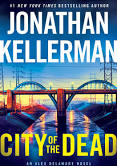One of my rare forays into non-fiction. The subtitle for
this book tells you all you need to know: “The secret history of Joint Special
Operations Command” otherwise known as JSOC.
It’s late summer 1980. A handful of military brass are in
conference about a new organization. About a year earlier, Operation Eagle Claw
had failed. The attempted rescue of American hostages held in Iran fell apart. Deep
inside Iran, the operation was postponed by a day because only five of eight
helicopters were air worthy. Upon withdrawing to their staging ground in Oman,
a helicopter crashed into a plane loaded with fuel and Delta soldiers. Eight died.
The mission was scrubbed. An opportunity was lost. Men died. But in the
immediate days later, President Carter wanted a mission ready to go on a moment’s
notice if it became apparent that the lives of the hostages were in imminent
danger.
The 2nd shot at a rescue would require coordination
of a Naval aircraft carrier group, Air Force transport and fighter support, Army
Delta and Rangers, and on-ground surveillance (CIA). A whole bunch of folks not
used to talking with each other much less working together. Who answers to whom
was at issue. The commander of the Eagle Claw rescue wanted a direct line to the White
House, not the normal circuitous route ‘up the chain’ for approval. Targets could disappear while the military stepped all over itself to get the go-no go answer.
This new
organization under discussion in 1980 was be just that. A mostly autonomous military
organization designed not along the lines of the traditional military. Rather,
this group would be charged with getting in fast, fixing the problem fast, and
get out quietly leaving as little of a footprint as possible . . . at the behest of the Joint Chiefs
and President.
The genesis of JSOC.
Being a history book, the birth of JSOC begins a journey
through the labyrinth of the military and Pentagon. Commanders and command
structure changed regularly. Spec Op units come and go. Weapons begin as a
jury-rigged contraption that end up going into production. Information gathering
starts out by piggybacking with the CIA before JSOC develops its own network. Electronic
surveillance techniques, that began as more of an exercise by some nerd
soldiers before accelerating the field of electronic surveillance, cell phone
tracking, and designing the protocols and equipment that brought real time surveillance
using drones. And from surveillance drones came armed drones.And the military is trying to keep up with the technology at home and with an increasingly sophisticated enemy.
The bulk of the book (and it's a beast. Text, notes, glossary, index comes in at 540 pages) is about how each new commander tweaked
JSOC operations to meet their vision. Lots of organizational revisions and the
mandatory acronyms the military is known for. Select missions are described to
make a point, not for the salacious details. The Bin Laden raid, the subject of
books and movies, is told in just a couple pages because finding him and tracking
him was JSOC’s mission and that is where Naylor spends considerable effort. Finding him was hard. Killing him was
the easy part.
Mission successes and failures alike are revealed. Training
locations for JSOC strikes in both the US and the world are discussed about
what made each location important. Locations of this developing cadre of elite,
secretive soldiers get attention, a couple of which are nearby.
How’d I learn about this book? I teach an online class twice
a year. In it, I do a series of group ‘zoom' calls. I logged in early and one student
was there. Just chitchatting, I asked where he lived (Texas), what was his ‘day
job’ (retired military), what branch of the service was he in (Army), what was his
MOS (military occupational specialty – military-speak for ‘his job’). He said
Spec Ops.
That got my attention. Now Spec Ops can mean command (the micromanagers),
logistics (getting people and equipment from point A to point B), operations
(the day-to-day stuff of a military unit), or the operators (the hard men who carry out the
missions). Probably a dozen others MOS operations to support those gun-carrying operators. I mentioned that I like to read espionage
thrillers and those can involve CIA, FBI, LEO, and the military. He said, ‘I
worked for JSOC. Heard of it?’ Yeah. Of course. From those espionage books. Said he’s
retired but he sometimes ‘gets called back in’ and, that 'you never know, I
might be called back in during this class' (he hasn’t yet). Never said what his MOS was in
the JSOC spiderweb of connections. He can’t.
He asked if I’d read Relentless Strike. Never heard of it. He
said get it. It’s good. A history book that reads almost like a novel. Thoroughly
researched and reported. But since its publication, the author (an award winning reporter with
special expertise and connections in special operations) has been shunned by
the spec ops community. Ex-communicated if you will. I asked why and was told me it was because Naylor did the indefensible. He had pulled the curtain back on an
organization that is obsessive about mission security and silence. A neighbor
of my daughter is a pilot out of Ft. Bragg (Delta and 86th Airborne
home) and he flies spec op missions. All his flights are secret even from his
wife. When he's called, she has no clue where he's going or when he’ll be back. He’s read the
book. Yes, the author is persona-non-Grata in the spec op community.
I asked if he (the pilot) is JSOC. He didn’t respond.







